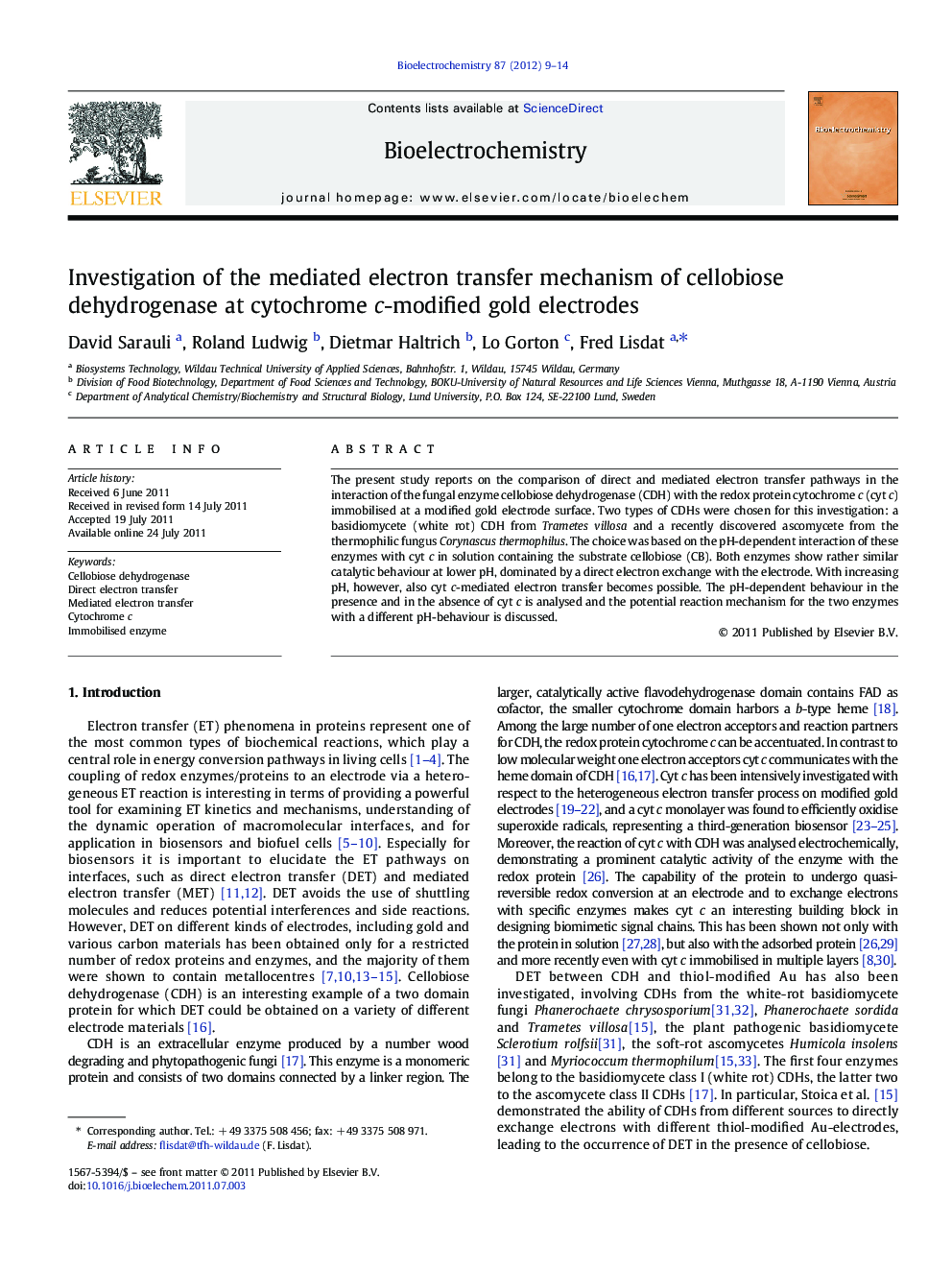| Article ID | Journal | Published Year | Pages | File Type |
|---|---|---|---|---|
| 1274430 | Bioelectrochemistry | 2012 | 6 Pages |
The present study reports on the comparison of direct and mediated electron transfer pathways in the interaction of the fungal enzyme cellobiose dehydrogenase (CDH) with the redox protein cytochrome c (cyt c) immobilised at a modified gold electrode surface. Two types of CDHs were chosen for this investigation: a basidiomycete (white rot) CDH from Trametes villosa and a recently discovered ascomycete from the thermophilic fungus Corynascus thermophilus. The choice was based on the pH-dependent interaction of these enzymes with cyt c in solution containing the substrate cellobiose (CB). Both enzymes show rather similar catalytic behaviour at lower pH, dominated by a direct electron exchange with the electrode. With increasing pH, however, also cyt c-mediated electron transfer becomes possible. The pH-dependent behaviour in the presence and in the absence of cyt c is analysed and the potential reaction mechanism for the two enzymes with a different pH-behaviour is discussed.
Graphical abstractFigure optionsDownload full-size imageDownload as PowerPoint slideHighlights► MET and DET pathways of CDH from two different sources with have been investigated. ► At lower pH ( < 5) DET is the dominating electron transfer pathway for both enzymes. ► At pH 6 a mediation by surface-bound redox protein cyt c is verified. ► Signal chains from cellobiose in via CDH and immobilised cyt c are obtained.
